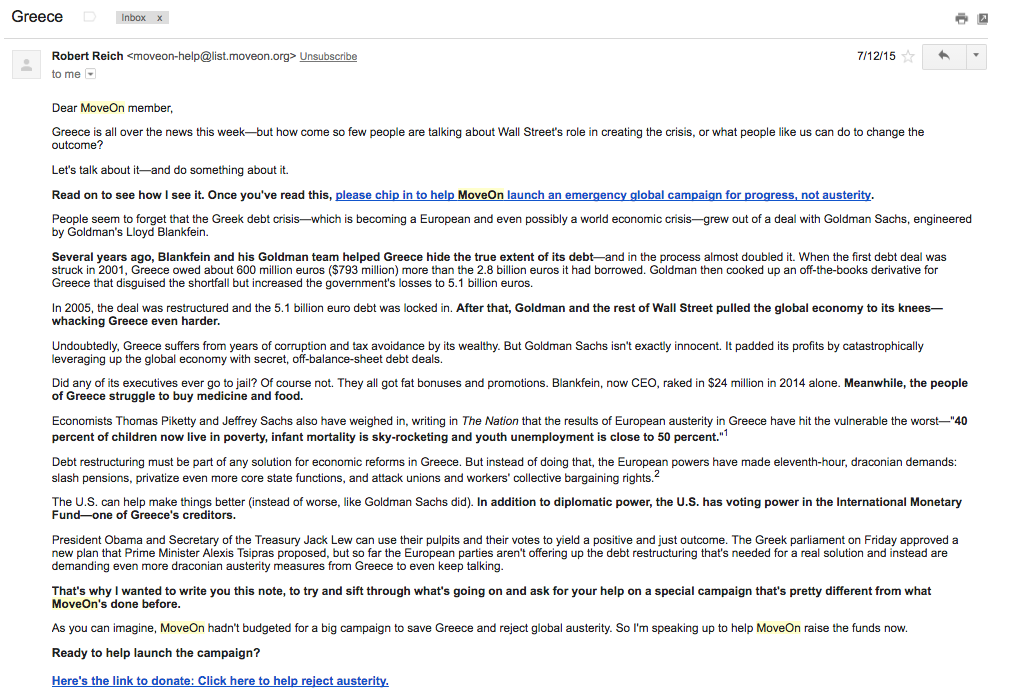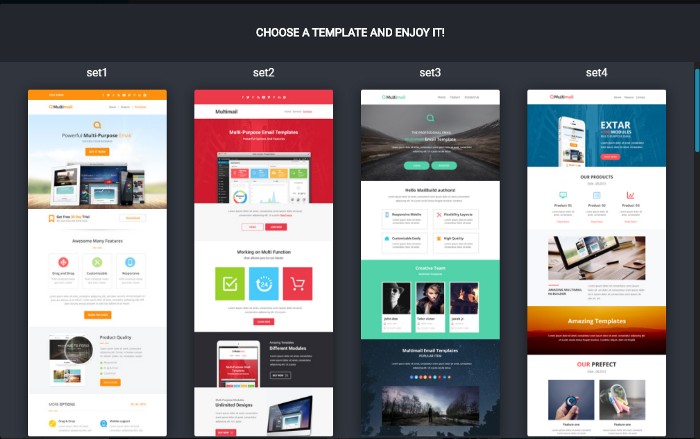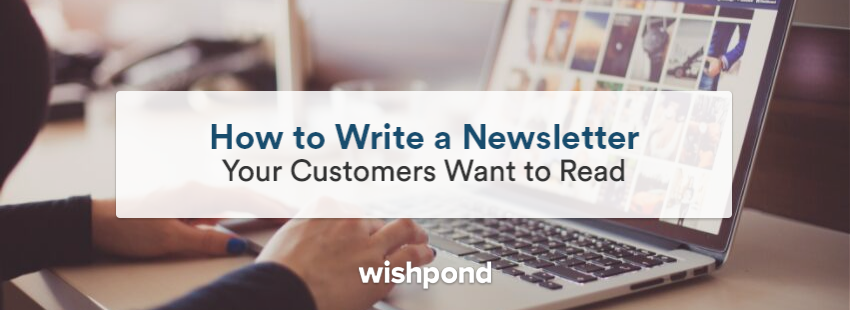Older readers may remember newsletters as the information-crammed document the school secretary punched out to send home with the kids each week.
Usually, those newsletters were over-designed informational papers bulging with clip art and a bevy of fonts that always included Comic Sans.
Many believe newsletters died with the dinosaurs, but guess what — newsletters are back, in a refined, digital form for the modern age.
Well-written and designed newsletters distributed to mailing list recipients are a powerful, cost-effective marketing tool you should have in your arsenal. They fill a role different from websites or blogs, which require people to initiate contact with you.
In an online newsletter campaign, you’ve got a way to proactively reach out to your customers and drive further engagement.
Visually eye-catching email designs like those, by Wishpond, can keep customers in your sales funnel:

It’s one thing to send out a newsletter, but it’s another to make it compelling and relevant. Not everyone is a writer or designer, so here, we have compiled some principles you can follow to ensure your newsletters draw customers in and help your bottom line.
Attitude and Tone
Attitude is everything. Believe in your product, and put your best effort into your newsletters. Subscribe to newsletters and research the things that work for you, that you find yourself responding positively to.
Chances are, your favorite newsletters employ subtle techniques that you can use, too — techniques to which your customers will respond favorably. However you choose to approach your newsletter, you must have a solid belief that it will help your business.
Don’t Come On Strong With the Sales Pitch
Your newsletter is not the forum to come on strong with a sales pitch. A good rule of thumb is to write informationally rather than promotionally.
Your newsletter is a way to keep your customers in the sales funnel, while saving the hard sell for your website. Instead, consider how to help people outside of your actual offering, with related content that your selected audience will find interesting.
Below is a promotional email newsletter, but note the nice design (probably templated) and to-the-point messaging:

By keeping your customers in the loop, seeking their feedback, and letting them know about your latest offerings, your buyers will know that you have something more to offer and that you’re constantly improving your services.
Here’s how to approach your content without being too salesy: “Follow the 90/10 rule: 90% educational and 10% promotional.”
A key element of marketing automation, including email marketing via newsletters, is to adopt a personable, informal tone. Common ways to achieve this include:
- Using your client’s name
- Humanizing the business with contractions, sentence fragments, and explaining any jargon you use
- Making it about the customer and mentioning them whenever possible
Audience
How well do you know your audience? Consider who they are and who you want to target. Your tone will depend on which audience you’re sending your newsletter to:
- Prospects
- Current clients
- Past clients
All of these three categories require customized messaging. Knowing precisely who your intended audience is means you can then decide on a message that’s relevant to them. If you are reaching out to past clients, for example, you’ll only turn them off by repeating historical facts that they already know about your business.
They’re more likely to open and read your newsletter if there’s a promise of learning something new. Try these ideas to draw customers in:
- Step into the customer’s shoes. What problems are they facing this month that you could help them resolve?
- Explain why the message matters to the audience
- Limit the focus to one product or service
You can also use this detailed guide on 23 Email Copywriting Tips to Skyrocket Conversions.
Purpose
Determine your purpose — what is it that you want to achieve by sending out this newsletter? Here are some of the reasons top marketers create newsletter campaigns:
- Increase engagement
- Generate sales
- Generate website traffic
Newsletters are an effective way to introduce monthly/quarterly initiatives. You can use a newsletter campaign to:
- Advertise new products
- Announce upcoming special offers and events
- Showcase publicity
Another purpose for writing a newsletter is to reestablish why your business is different within its competitive market. If this is your intention, there is one golden rule always include a CTA.
As with effective landing page design, a successful newsletter should guide customers toward one single action. That means you have to stick with one distinct, actionable CTA for the entire newsletter.
This way, you focus your efforts on your purpose, and your customers are not pulled in any other unwanted direction. There is nothing complicated about CTAs in newsletters. Best practice can be as simple as encouraging your customers to:
- “Click here” to read more
- Encourage sharing on social media
- Buy something
Intrigue
Pique interest by investing the time to fashion a creative subject line. Boring subject lines will ensure a newsletter meets its doom in the trash. As an example, ask yourself which of these two subject lines would make you more likely to open a newsletter:
“August newsletter”
or
“[Name], which financial worries keep you up at night?”
The key is to create a hook with your subject line. This hook might take the form of a question, confession or list of tips
Here are 13 Clickable Email Subject Line Examples Your Customers Will Love.
Formatting
Formatting is critical to the success of your newsletter. You will need to format the newsletter to be scannable, so that your readers are not overwhelmed by blocks of text.
Your newsletter should not look like this:

Rather, it should look slick and appealing like this::
Medium

Software is available to help you design and format your newsletter. But in general, effective formatting practices include the following:
- Make your newsletter punchy — not too long!
- Break up text with subheadings and images.
- Create visual hierarchy by using larger point sizes for your headline item, and a 30% smaller point size for subheads.
- Minimize blocks of text with text previews and links to your website or social media to “learn/read more.”
When it comes to design, less is more. If you are not a designer, there’s no need to feel that formatting an effective newsletter is beyond your skill set. Just do your research on email marketing automation platforms that include newsletter templates and responsive email editors.
Get Started on Your Newsletter Campaign
Newsletters have been around a long time, but it’s a format that’s far from dead. With an emphasis on attention to detail, such as messaging that’s customized to specific recipient types, an informative but not-too-salesy newsletter can draw your customers in.
The best part is that Wishpond allows you to track precisely how well your newsletters are performing. Your open and click-through rates will guide you on what works and what doesn’t, and all the while, you’ll keep those customers in your sales funnel.
About the Author
?

Craig Farmer. Craig is Avalaunch Media’s Swiss Army knife: director of quality assurance, graphic designer, and copywriter. He has many years of experience under his belt as a newspaper reporter, sub-editor, and layout specialist. He currently leads the highly regarded Avalaunch Media creative team.

